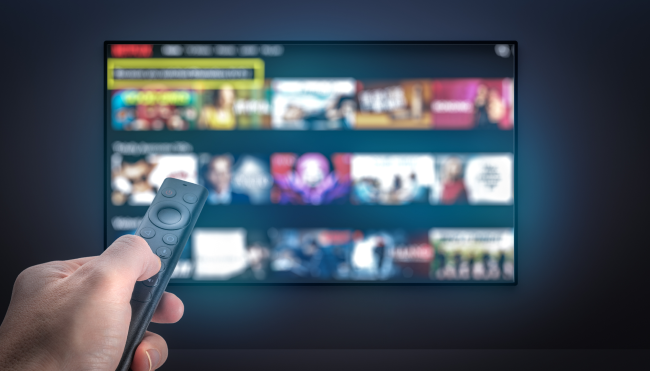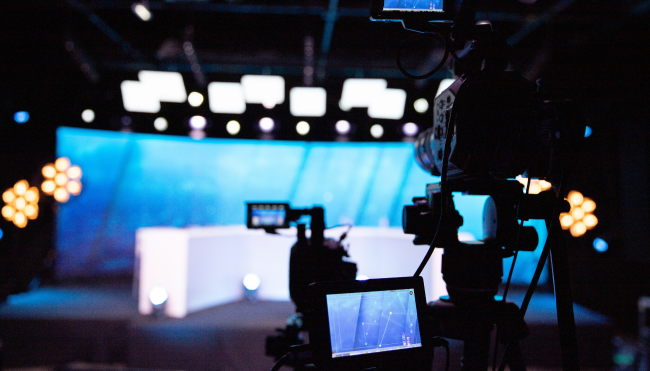- Why Amagi
-
Solutions
Contact UsBusinessWho We Serve
- Offerings
- AI
-
Resources
Contact UsINDUSTRY REPORTSAmagi FAST Report #15: The Power of Live Programming: A Catalyst for Streaming SuccessAugust 21, 2025Read More
-
Company
Contact UsNewsroomAmagi launches AI-powered Smart Scheduler to improve content programmingApril 3, 2025Read More
Blog
4K UHD: Going beyond the pixels
By Bhargav Joshi, Software Development Lead, Amagi - February 28, 2022
When was the last time you were going about your business, and you came across a display that made you pause and say, "Wow, that looks different!" If you are a broadcast industry veteran, this would have probably been at NAB or IBC a couple of years ago. If you are a technology enthusiast, it was probably when these displays started hitting the shelves early on. For many unsuspecting consumers, such encounters typically happen when least expecting it: example, dinner at a family friend’s who just got their new TV, or when visiting an electronics store.
Regardless of the viewer profile, the experience that evokes awe is the common attribute of anyone's first encounter with UHD. It is the latest advancement in display technology. But is it just another evolutionary step, like the one we had before in the SD-to-HD transition, or is there more to it than meets the eye? [pun intended :)] Let’s briefly explore.
The technologies powering UHD
- High resolution video: The most obvious step-up feature of the UHD is its higher resolution. UHD comes with a resolution of 3840x2160 pixels, which is four times the resolution of Full HD. It is also commonly called 4K resolution since the horizontal resolution of 3840 is roughly equal to 4000 (although technically, the term 4K has origin in DCI-4K, which is a cinema standard and has a resolution of 4096x2160 pixels). The extra resolution leads to a much sharper and crisper picture, which is an enabler for the manufacturing and adoption of larger TVs.
With 4K resolution, TVs sizes of 55" and above are becoming a norm, something that would not have been possible with Full HD resolution of 1920x1080 (the resulting image would have been too pixelated). - High Dynamic Range (HDR): While high resolution is the most obvious feature of UHD, High Dynamic Range is the most standout feature of UHD. It wouldn't be an overstatement to say that its impact on picture quality by far eclipses that of the extra resolution. High Dynamic Range refers to the extra range of luma or brightness that comes with UHD. The luma range of the displays prior to UHD HDR capable displays (called Standard Dynamic Range or SDR displays) was from 0.01 to 100 nits.
UHD HDR display has a much wider range from 0.00005 nits to 1000 nits (practically, the OLED displays in the market currently can display from 0.001 to 800 nits). It means that the whites/highlights are brighter, while blacks/shadows are much deeper. - Wide Color Gamut (WCG): Apart from the high luma range, the UHD displays also come with a Wide Color Gamut. Gamut refers to the range of colors a display can produce. The SDR TV could display a very narrow range of color gamut. That was because, back then, the standard that governed the color gamut was designed with the capabilities of CRT display in mind.
UHD displays can render far more saturated colors, resulting in a life-like picture quality. Combined with HDR, it is what gives UHD its wow-factor.
(There is a lot more to talk about HDR and WCG - the technical standards, the consumer industry standards, and nuances that come into play when incorporating HDR in broadcast. We will cover it in more detail in the next blog.)
Is it time to move to 4K?
Want to be at the Super Bowl? That will be $6000 for an entry-level ticket. Want the best view? That will be $80000 for the VIP section. How about something still better - jumping right into the action! Yes, the immersive nature of the UHD HDR display can virtually teleport your viewer from the couch to the center of action.
Besides, UHD is no longer a niche segment it used to be a while ago. It is rapidly becoming a norm. Statista’s report shows that about 44% of television households in the US have a 4K-supported TV device.
Your viewers want better picture quality, and they already have TV sets enabled to deliver it to them. You, as a broadcaster, need to do the rest.
Do you need to move to the cloud to support 4K?
Definitely, yes! If you try to use traditional broadcasting to generate 4K output, firstly, you will have to change all your existing equipment. The “tech-refresh” costs in case of UHD are immensely prohibitive. It doesn’t really end there. Even after paying through the nose, would a hardware-based workflow really provide the required flexibility? What if a tranche of assets just got dropped on your head at the last moment, but you only have N encoders to process them? How are you going to manage your ever growing inventory of mezzanine assets that gobble up 250 GB of disk space for every hour of content?
What if you need to handle multiple concurrent live events, but only sporadically? No point in procuring the pricey hardware and letting it sit on the racks playing SMPTE bars and bip-bops for the most part of the year.
The case for cloud migration
Switching to the cloud might be an option to contemplate today; but tomorrow, it is going to be the eventuality. So why not make a transition at this important juncture, rather than being dragged down tomorrow by the sunk cost fallacy of the hardware investment? In terms of entry-cost, scalability and flexibility, the cloud is unparalleled. Thanks to the ever increasing compute prowess available on cloud, the lines between pure software solutions and dedicated hardware are getting blurrier by the day.
Besides, if the current pandemic has taught us anything, it is that the cloud offers the most convenient, adaptable and seamless workflows. Hardware based workflows, no matter how bespoke, will always be hamstrung by the need of physical presence on premise.
The Amagi factor
Amagi CLOUDPORT – our cloud based, UHD playout platform allows broadcasters to host and playout 4K content over a secure and scalable cloud service. It enables content owners to extend Dolby-surround to their channels without the need to overhaul existing systems.
Other salient features of Amagi CLOUDPORT UHD platform include:
- Support for 10-bit UHD HDR up to 60 fps
- Maintaining High Dynamic Range and picture quality throughout the workflow
- Support for live input with UHD
- An all-software based solution for transcoding, tone-mapping, and delivering UHD and HDR content over the cloud
Currently, the platform supports playout in HDR10 and HLG, the most popular HDR formats. Support for Dolby vision and HDR10+ is in the works. Broadcasters can drop assets in any HDR format and Amagi CLOUDPORT can take it from there. If the formats differ, the tone-mapping kicks in automatically so that the output linear stream maintains a consistent HDR spec. It can also manage automatic scaling and aspect ratio conversion of non-UHD assets that do not match the feed spec; this typically happens with legacy assets, interstitials, and third-party assets like advertisements.
The implementation complexity increases manifold when it comes to the UHD playout. To get there, Amagi has massively revamped its product architecture. It was also the perfect time to do that, as the high-end servers that can meet the compute demands of a software-only UHD playout started to become available on the cloud.
Powering Tokyo Olympics
Amagi was chosen by NBC Olympics, a division of the NBC Sports Group, to provide UHD playout with cloud automation for its production of the Olympic Games, on its Olympics Channel in 2021. When the pandemic was at its peak, we enabled the broadcaster to deliver an exceptional viewing experience in UHD to their customers. It was managed through a remote workflow, and without them having to deploy a single piece of playout hardware.
Are you ready to dazzle your viewers in UHD and THRIVE in the broadcasting world?
The broadcast industry is going through a long due tech-reset cycle. There is no doubt that the cloud is going to be the enabler and centerpiece of this disruption. If you are a broadcast player and technology excites you, these are interesting times to live in. Watch this space and stay tuned to Amagi!
To know more or for a demo of Amagi CLOUDPORT, contact us at cloudandme@amagi.com
Related Blogs
Get Started
Increase revenue and reach with our Broadcast & Streaming solutions.
Cloud modernization. Streaming unification. Monetization. Marketplace.
 German
German French
French Spanish
Spanish Korean
Korean Japanese
Japanese Portuguese
Portuguese


